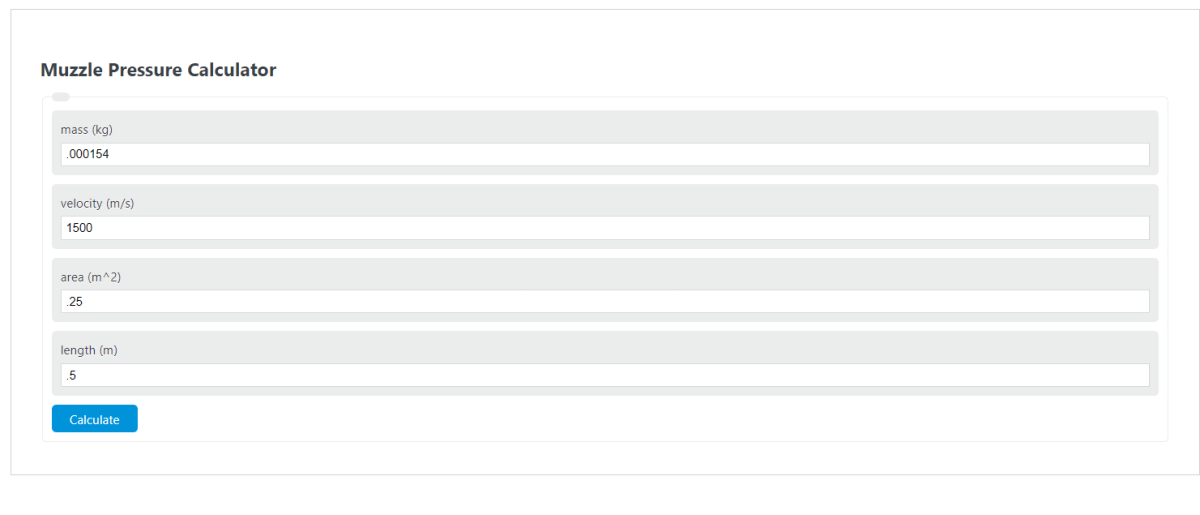Enter the mass (kg), the velocity (m/s), length (m), and the area (m^2) into the calculator to determine the Muzzle Pressure.
Muzzle Pressure Formula
The following formula is used to calculate the Muzzle Pressure.
Pmuzzle = m*V^2 / (2*A*L)
- Where Pmuzzle is the Muzzle Pressure (Pa)
- m is the mass (kg)
- V is the velocity (m/s)
- A is the area (m^2)
- L is the length (m)
To calculate the muzzle pressure, multiply the mass by the velocity squared, then divide by the product of 2 times the area times the length.
How to Calculate Muzzle Pressure?
The following example problems outline how to calculate the Muzzle Pressure.
Example Problem #1
- First, determine the mass (kg). In this example, the mass (kg) is given as .000154 .
- Next, determine the velocity (m/s). For this problem, the velocity (m/s) is given as 1500 .
- Next, determine the area (m^2). In this case, the area (m^2) is found to be .25.
- Next, determine the length. In this case, this is .5m.
- Finally, calculate the Muzzle Pressure using the formula above:
Pmuzzle = m*V^2 / (2*A*L)
Inserting the values from above and solving yields:
Pmuzzle = .000154*1500^2 / (2*.25*.5) = 1386 (Pa)
FAQ
What factors can affect muzzle pressure in firearms?
Muzzle pressure in firearms can be affected by several factors including the type of propellant, the amount of propellant, the bullet’s mass, the barrel length, and the internal barrel dimensions such as the bore and chamber size.
How does muzzle pressure impact a firearm’s performance?
Muzzle pressure directly impacts a firearm’s performance in terms of muzzle velocity, recoil, and noise. Higher muzzle pressures typically result in higher muzzle velocities, which can improve the bullet’s trajectory and accuracy over longer distances. However, this also increases recoil and noise.
Can muzzle pressure be too high, and what are the risks?
Yes, muzzle pressure can be too high. Excessive muzzle pressure can lead to dangerous situations, including the risk of barrel explosion, which can cause injury to the shooter and bystanders. It can also accelerate wear and tear on the firearm, reducing its lifespan and reliability.
